#Noldorin
Text
The Languages and Linguistics of Middle Earth

Gin suilannon!
In the context of my minor programme in Celtic studies and languages, I am following a course called From Táin to Tolkien and Beyond, and today, we had a guest lecture about the languages of Middle Earth, more particularly Sindarin. Since it might be useful to some of you (out of curiosity or for your fanfictions), I thought I would share my notes and my conversations with the guest lecturer here.
This was a very linguistics-driven lecture, so I will try to add explanations where I can and, hopefully, make the information more accessible. If you have any questions, you can react to this post or DM me! And beware, this is a very long post.
So, without further ado, here is what I learnt.

✽ Notes on Historical Linguistics, Manuscript Tradition and the Languages of Tolkien's Middle Earth by Dr. Aaron Griffith
✣ Shared histories of languages and manuscripts are often visualised with tree diagrams to see the evolution and how they branch out
✣ Little material was published about Middle-Earth and the Elves during Tolkien's lifetime
-> Most of it is part of the Legendarium
-> Main periods of writing (here we only mentioned the writing processes or when a project was finished, not when they were published):
- The Lost Tales (1916-1926): infancy of the Elvish languages
- Sketch of The Silmarillion (1926-1930): revision of The Lost Tales and some changes brought to Elvish
- Quenta Noldorinna (1930): further reworking and significant expansion of the sketch
- The Hobbit (1933): originally intended as an unrelated story
- Quenta Silmarillion (1937): fullest expansion of The Lost Tales and significant refinement of the languages
- The Lord of the Rings (1950s): use of the mythology of all the earlier writings as a basis, reworking of the languages and massive changes in their interrelations
- The Silmarillion (post-1948): based on Quenta Silmarillion, which was heavily revised after The Lord of the Rings
✣ Tolkien rarely dated his works and compositions, so it is difficult to establish a precise creative process or linear chronology of the changes brought to Middle Earth. However, he did leave us some clues:
- Absolute Dating -> occasionally, Tolkien did attach dates to his manuscripts, but it remained a rare occurrence
- Relative Chronology -> some compositions are dependent on changes to earlier works, so a logical chronology can be estimated (this can also be made possible by the scrap papers from Tolkien's personal records and drafts)
- Handwriting -> can be misleading, but it can be a helpful tool to date pieces of distinctly different chronological layers
- Nomenclature -> Tolkien frequently changed character names, so particular names can be matched with letters and extracts in which they appear
- Christopher Tolkien -> his manuscript order from the twelve-volume The History of Middle-Earth series
✣ Critical asymmetry -> languages frequently split into dialects and other languages of their own, but when manuscripts are retraced according to their version of the same text (think of Arthurian romances and oral tradition being recorded at different points in time and therefore presenting different themes or characters), narratives (stories) cannot be regrouped as easily
-> However, there are 2 relations between stories and languages:
1. How changes can propagate in a language system or narrative tradition
2. The relations of language families in real- (at the time of composition) or book-time (time as it passes in the stories)
✣ In natural language, change moves forward in time. This is a trend which also applies for errors in manuscript copies (irregularities in tropes, character changes, etc.)
✣ In stories, a plot development can be carried forward just like a sound can evolve in a language. However, change can occur backwards, too. For example, if a character's ancestry is modified, this can change the whole manuscript history of the story being written (by this, understand that the story must be readapted to fit the new information to maintain some consistency).
✣ Historical linguistics is concerned with the study of language change and the formation of language families (Romance languages, Germanic languages, Slavic languages, etc.). It does so by examining and comparing systems from different languages to see if they can be retraced to an original, common system (Welsh and Irish stemming from Proto-Celtic, for instance).
✣ Some of Tolkien's languages were intended to be related. The following languages and dialects are related in a clear, 'historical' structure, which mimics the way that languages evolve in our world:
- Quenya
- Sindarin
- Lindarin
- Noldorin
- Telerin
- Doriathrin
- Ilkorin
✣ Elvish languages were constantly revised by Tolkien, making it challenging to determine a single 'history' (or creative process) of Elvish tongues. In their case, it is more accurate to speak of a series of histories or continua, which refer to the times at which Tolkien brought significant changes (often 1916, 1937 and post-1948). A tree diagram is thus no longer fitting to visualise them all. The diagrams overlap in a three-dimensional visualisation instead, with each layer representing the changes of each major revision.
✣ Some changes were brought solely for aesthetic purposes. Tolkien found the phonetics of Welsh and Finnish particularly pleasing to the ear and, therefore, based Sindarin and Quenya on their structures. As you probably already know, these are the two most-developed languages in the lore of Middle Earth, but he fleshed out at least four other Elvish languages (Telerin, Ilkorin, Doriathrin and Danian). There were generally more changes in Quenya (abbreviated Q).
✣ What was originally Noldorin (abbreviated N) in the 1916 and 1937 versions is now Sindarin (abbreviated S). After 1948, Noldorin became a dialect of its own, and its place in the language tree shifted. The terms and grammar remained rather consistent from one version to the next.
-> example:
1916: N Balrog 'fire demon' (bal- 'anguish' + -róg 'strong')
1937: N Balrog 'fire demon' (bal- 'torment' + rhaug 'demon')
1948: S Balrog 'demon of might' (bal- 'might' + raug 'demon')
✣ Such modifications reflected the major changes brought to the stories (especially to what we now know as The Silmarillion), but they also mirror the natural linguistics evolution of real-life languages. This causes a problem, namely in the emergence of 'linguistic orphans', or words whose etymology was no longer valid because the linguistic or sound laws that birthed them in the first place were removed.
-> example: Eärendil (Q 'lover of the sea', ayar- 'sea' + -ndil 'lover')
1916: eären was the genitive form (or possessive form) of eär, so the compound made sense.
1937: eäron replaced eären, but Tolkien remained particularly attached to the previous version because of the Old English éarendel -> this created a disruption in etymology, so he declared that eär/eären meant 'sea'
✣ Major sound changes introduced with The Lord of the Rings
✣ Tolkien introduced lenition in some grammatical cases. In Celtic languages, it is a rather common occurrence. It consists in the softening of a consonant at the start of a word according to certain rules. For example, the sound [p] is softened into a [b]. My knowledge of Irish is non-existent, but it is something which happens in Middle Welsh (c.1100-c.1400) and Modern Welsh.
-> example: before 1972, Tolkien suggested that the name Gil-Galad ('star of brilliance', 'brilliant star') was lenited, which means that the second component of the name stems from the word calad (lenition causes the c to soften into a g).
-> However, he stated in a letter in 1972 that lenition no longer occurred if 'the second noun functions as an uninflected genitive' (in other words, that the possessive is not marked with an apostrophe, 'of the', or any other marker that applied in Sindarin). This explains the merging of ost 'start' + giliath 'fortress' into Osgiliath 'fortress of the start'. If giliath was lenited, the name would instead be Osiliath or Ostiliath (when lenited, g disappears at the head of the noun).
-> There is one noted inconsistency regarding the 'rule' above, and it is the case of Eryn Vorn 'Dark Forest'/'Forest of Darkness'. Eryn is a plural form of oron 'tree' and morn acts as a noun (but it is usually the adjective for 'black, dark' and morne is the noun referring to 'darkness, blackness'). Due to Welsh vowel change rules in certain plural forms, morn becomes myrn, and this very same plural form should accompany eryn (both adjective and noun adopt a plural form). Instead, we find a singular form of morn which is lenited (m becomes v). This is possibly an error accidentally left in by Tolkien.
✣ The nature of Noldorin/Sindarin makes Elvish languages rather realistic in their evolution compared to real-life languages, because irregularities occur. Dr. Griffith argues that languages naturally show irregularity because of gradual changes and borrowed words, but he acknowledges that accidents are sometimes just that. Accidents.

✽ Notes on the lecture by Dr. Aaron Griffith
✣ A general interest in creating new languages emerged in the 19th century. It was believed to be a tool which could help resolve political conflicts by creating a sense of cohesion and avoiding miscommunication. This is evident in the creation of Esperanto.
✣ In most cases of invented languages, the language was invented first, and the world or context they belonged to was formed from there. Tolkien worked exactly the other way around.
✣ Tolkien aimed to create an English myth, because he considered that England lacked its own mythology. King Arthur is generally considered Celtic in essence (possibly Welsh) and therefore could not apply as an English myth. This could explain why he retained the Gregorian calendar throughout The Hobbit and The Lord of the Rings. It served as a familiar bridge between Middle Earth and England/the real world.
✣ In original maps of Beleriand, there used to be land west of Ered Luin (the Blue Mountains northwest of the Shire). This was changed in later maps, which Tolkien designed and drew himself. Often, Arda was depicted as a globe with several continents. Afterwards, Tolkien decided that Arda was, in fact, flat.
✣ Backstory of the Elves (I have no knowledge of The Silmarillion, so if I did not use the right terms or names, please feel free to correct me!):
- Elves first came into existence in Cuiviénen and were invited by the Valar to join them in Valinor, meaning that they had to cross the continent and the ocean
- Not all Elves made it to Valinor, however. Some decided to separate from the main group and settled in different areas of Middle Earth, like in Greenwood (later known as Mirkwood). This caused the language they spoke to evolve into different dialects and, sometimes, completely separate languages
- Elves returned to Middle Earth after the war against Morgoth (S; Q Melkor), aided by Númenorians
- The West was physically separated from the rest of Arda by a 'cut' through the ocean. The gods then shaped Arda into a globe, but once past the portal to the Undying Lands, it was flat again.
✣ Most often, Tolkien did not provide translations of the phrases he peppered into his works, mostly because he believed that nobody would be interested in them. Once he received enthusiastic letters from readers, he decided to attach them to later versions. He did regret publishing the appendices of The Lord of the Rings, however, because the changes felt too 'final' and he felt as though he took away his own liberty to make further revisions to the material (once it's published, you cannot go back).
✣ Tolkien created quite a lot of poetry to match the phonological aesthetics of Sindarin and Quenya.
✣ Outside The Lord of the Rings, the longest source we have in Sindarin is The King's Letter, which was originally supposed to be part of the epilogue in The Return of the King but was not in the final version because he wrote it in the 1970s. In this letter written entirely in Sindarin, Aragorn (then King Elessar) invites Sam, Rosie, and their children to visit him and Arwen in Minas Tirith.
✣ Sindarin grammar is tricky to reconstruct because of the lack of sources on the matter and the complicated grammar revisions that Tolkien brought. However, we do know that it is loosely based on Welsh, which he confirmed in 'English and Welsh' in The Monsters and the Critics (published posthumously in 1983). He aimed to recreate the same 'pleasant' sounds that he found in Welsh for Sindarin. If the reader knows how to pronounce the Welsh alphabet, then they can easily pronounce Sindarin.
✣ Secondary sources on Sindarin:
- A Gateway to Sindarin by David Salo. Salo worked as a language consultant on the films, but his book has been criticised by Tolkien scholars because it tends to ignore the changes between 1937 and 1948 and it treats Noldorin as a dialect of Sindarin, which is no longer the case from 1948 onwards.
- The Languages of Tolkien's Middle-Earth by Ruth S. Noel
✣ Primary sources are very incomplete, but the main ones we can use to observe the language are the following publications:
- The Lord of the Rings
- The Lost Road and Other Writings
- The War of the Jewels
- The Peoples of Middle-Earth
✣ As established in the previous section, Sindarin follows some of the grammatical rules present in Welsh and pre-modern Welsh. We encounter mutations, especially lenition (also called 'soft mutation' because of the sounds becoming softer, e.g. p becoming b), and they play a crucial role in the structure of Sindarin. Below is a comparison of soft mutation/lenition in the context of Welsh and then in Sindarin.
-> Welsh: dyn 'man' + teg 'attractive' = dyn teg 'attractive man'
merch 'girl' + teg 'attractive' = merch deg 'attractive girl' -> soft mutation after a feminine noun, t is softened into a d
-> Sindarin: Perhael 'Samwise' (literally 'half-wise')
Berhael 'Samwise' -> lenition when used as a direct object in a clause, p softened into a b
Carm Dum 'Red Valley' (capital of Angmar) -> uses tum 'valley', but it is lenited when acting as an adjective or an adverb, t softened into a d
✣ Other forms of mutations exist in Sindarin, but this part of the lecture is quite technical and does require a basic knowledge of Welsh or Middle Welsh to be comprehensible. Feel free to message me if you wish to know more about them.
✣ Mutations arose from sound changes that affected phrases (intonational units). In other words, they are groups of words that have a single principal accent (or stress) to fluidify the manner of speech and convey a sense of emphasis. For instance, not every word is stressed separately in the sentence 'I am going to the supermarket'. The stress is applied by the speaker to highlight their meaning. Is 'I' emphasised to insist that it is 'I' who is going to the supermarket? Is 'supermarket' stressed to insist that it is the supermarket that I am going to, and not another location?
✣ Mutations are inherited from Welsh and its earlier forms. The same is true between Pre-Sindarin (or what Tolkien then referred to as Noldorin) and Sindarin.
-> Welsh: atar evolved into adar 'bird' (lenition of t into a d)
-> Sindarin: atar evolved into adar 'father' (same pattern)
✣ No cases in Sindarin verbs, unlike in Quenya. This means that there is no Nominative, Genitive, Dative or Accusative.
✣ Like in Welsh, again, some plural forms of nouns involve what we call a vowel change. This means that according to a regular pattern, the vowels contained within a noun are not the same between their singular and their plural forms. In Sindarin, the vowel change and suffixes help to mark plurals. As far as I'm aware, the changes are identical in Welsh, so if you wish to use Sindarin in your own work, have a look at the vowel changes rules and you should be able to form your own plurals. Please note that it occurs with both non-final and final syllables.
-> examples:
- adan 'man' -> edain 'men'
- certh 'rune' -> cirth 'runes'
- annon 'gate' -> ennyn 'gates'
- amon 'hill' -> emyn 'hills'
- mellon 'friend' -> mellyn 'friends'
- Dúnadan 'Man of the West' -> Dúnedain (u is not affected)
✣ Suffixes are another way to mark plurals.
-> examples:
- harad 'south' + rim 'multitude' = Haradrim 'Southrons, Men of the South'
- hadhod 'dwarf' + rim 'multitude' = Hadhodrim 'Dwarves (as a race)'
✣ Compounds are common as well.
-> example:
- morne 'darkness, blackness'/morn 'dark, black' + ia 'pit, gulf' = Moria

✽ Questions I asked Dr. Griffith directly and his answers
✣ Q: In your article and in the PowerPoint presentation, you sometimes mark terms with an asterisk first (e.g. *rokko-khēru-rimbe when you discuss the origin of the term 'Rohirrim'). What does this notation refer to?
✣ A: An asterisk before a form means that it is not actually found anywhere, but we assume it must have existed. In this case, *rokko-khēru-rimbe is the form of Rohirrim as it would have been pronounced in Old Sindarin, but we don't actually have the word anywhere in a written text
✣ Q: For Rohirric/Rohanese, we know that the language that Tolkien based it on was Old English and that terms were directly borrowed from it (e.g. grīma 'mask' or þeoden 'lord, prince, king'), or that names and phrases from Beowulf have been peppered in the lore of Rohan (e.g. Éomer is a character mentioned once, and the first line sung by Miranda Otto in the 'Lament for Théodred' is a line from Beowulf as well). Unfortunately, it seems that the sources on the languages are few, but do we know his reasoning or process in tweaking and applying Old English to create Rohirric/Rohanese? Do we know, perhaps, how the grammar differed from Old English?
✣ A: We don't really know anything about the language of the Rohirrim. Tolkien chose Old English as a sort of cipher. What I mean is: the language of Middle Earth is called Westron, and the Rohirrim spoke a very archaic dialect of it. Tolkien represented this by having them use Old English/archaic forms. He talks about this in one of the appendices to The Lord of the Rings, though I don't remember which one.
✣ Q: In your opinion, is it realistic to compose texts in Quenya or Sindarin, considering that we do not really have a cultural context behind them that is fully explicit? By this, I mean that since idioms and certain concepts are intrinsically tied to their cultural context, is it possible to actually use the Elvish languages to compose new texts altogether?
✣ A: It is possible to compose texts in Quenya and Sindarin. People do it. Obviously, some things are simply impossible to know: how would you say 'computer' or 'shopping mall'? And for other things, we cannot really know since only Tolkien really had the 'true understanding' of Elvish languages and cultures necessary for some text production. That said, people do do it. I don't know much about it, though, I'm afraid.

For those who are interested, I have Dr. Griffith's article, the PowerPoint presentation with sources and vocabulary on it, as well as a handout with Noldorin and Old Noldorin. Dr. Griffith also sent me some extra sources, let me know if you want me to send them to you!
If you have questions, I can always try to contact Dr. Griffith again, he is the coordinator of my Middle Welsh course, so I'm bound to bump into him again, and he is genuinely excited to discuss all things Tolkien :)
@konartiste @from-the-coffee-shop-in-edoras @lucifers-legions @emmanuellececchi @hippodameia
#Tolkien#Elvish#Elvish languages#Sindarin#Quenya#Noldorin#linguistics#Middle Earth#Lord of the Rings#LOTR#Tolkien's linguistics#masterpost#reference#lotr ref
99 notes
·
View notes
Photo




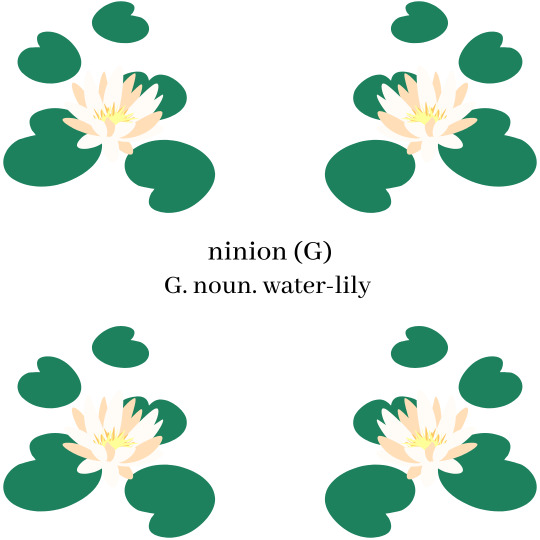




x x x x x x
Gnomish is the elven language Tolkien conceived of around the time of his writing of the Books of Lost Tales. It is a prototype of Noldorin languages
This time I played around with my own squares!
100 notes
·
View notes
Text
A few thoughts on Galadriel's Valor, Story, and "Girl-boss" energy

I've seen many things written about the "girl-bossification" of Galadriel, as though she 1. did not need anything extra given to her character, 2. she was diplomatically power hungry rather than vengeful, and 3. she was already Married and had her daughter by the time this show was taking place.
I'm not attempting to defend any creative choices or say why the show is "right" to portray them as they have, but I do think some things could be discussed with a bit more context and I do love some lore-diving and graceful discussions, so here goes.
To the first part (1.), she is recorded as not only engaging in the first kinslaying (she fought AGAINST Feanor, protecting the Teleri, but almost certainly killed other elves and elves aren't known for their weakness), but Tolkien himself said she was a "great warrior" in her youth. In the same vein, canonically she did initially go to Middle-earth to rule, but that is not clearly stated to be false here, merely that she is currently fueled by anger, pride, and vengeance, and rejecting the Valar's pardon which is canon for the most part (pg. 242 Unfinished Tales). Again, not defending, but I do think that this fits into established context as well as the next two points.
2. We're not given a clear reason as to why she, specifically, comes to Middle-earth in the show. There is a general reason why the elves go, yet not her. But I also realize that such logic goes both ways and I also understand that adapted stories are told by admissions AND omissions. However,
3. We know soooo little as to the intentions of the story yet. There's so much left to see, but the one thing I do think is the most important to bring up is the fact that this "character reversal" has been done before, by Peter Jackson and the character of Aragorn.
Aragorn in the books not only knows he's the king, but is downright giddy and excited to get going, reforging Narsil into Anduril before they even leave Rivendell. The rest of the trilogy is him slowly spreading his influence and making his grand "Return" Yet, in the movies it's the exact opposite. Movie Aragorn is not just reluctant, but almost hostile to the mere idea of reclaiming his throne, and slowly throughout the series he is pushed towards that reclamation of power.
In the RoP, we see Alatáriel/Artanis (Galadriel) as the daughter of a great Noldorin lord, single and alone in a quest for vengeance. Yet, we know she will become the most influential Elf in all of Middle-earth. The reason she doesn't fit that bill yet is because THAT is the story that I think they are telling. Literally the first episode is setting up the journey towards finally letting go of the sword, claiming the influential (but non-martial) power of her birthright and marrying (quite scandalously, I might add) a sindar elf that will unite the Noldorin and Sindarin Elves into a United people.
I think the story we are going to see is Alatáriel, the sword-wielding daughter of Arafinwë, become the Galadriel, Queen of the Elves of Middle-earth.
(*POSSIBLE SPOILERS FOR SHOW-ONLY WATCHERS*)
After all, when Sauron/Annatar does return and sway the Elven people, there are only two elves that find him untrustworthy and reject him (Galadriel and Elrond).... and the fact that no one listens to her has always been questionable and unexplained in the cannon narrative. If the most powerful and influential leader alive said someone seems sketchy and shouldn't be trusted, it doesn't make sense that you'd ignore those warnings off-hand, especially if she was regarded as one of the wisest elves alive.
But if it's a blood thirsty, vengeful war-leader who has spurned the commands of her king who is saying that this beautiful and gracious elf who has been kind and generous and infinitely helpful to all of her people is actually evil incarnate, perhaps she would not be given much credence and would instead be ignored. It might actually HELP explain a few things lol.
(*POSSIBLE SPOILERS CONCLUDED*)
In the end, we will simply have to wait and see. But I think she's (Morfydd Clark) bringing something to Galadriel we have never seen but always known about, and that's a personal history. Just like Aragorn, I'd bet my last penny that we will see the Galadriel we all know and love, but that's the journey she is on. And I am so excited to see it happen!
But perhaps I'm like Elrond and harbour naive hope for the future, only time (or perhaps a certain Elf's magical mirror) will tell.
In any case, I wish you all well!
Na lû e-govaded 'wîn, mellon nin!
~ Ramoth13
#ramoth13#fandom#lord of the rings#silmarillion#the hobbit#rings of power#galadriel#jrr tolkien#tolkien elves#tolkien#histories of Middle-earth#tolkien lore#morfydd clark#noldor elves#Noldorin#Sindarin#sindar elves#the rings of power
225 notes
·
View notes
Photo

"𝒀𝒐𝒖 𝒂𝒓𝒆 𝒕𝒉𝒆 𝒃𝒓𝒊𝒈𝒉𝒕𝒆𝒔𝒕 𝒔𝒕𝒂𝒓. 𝑴𝒚 𝑷𝒓𝒊𝒏𝒄𝒆"
_________
My headcanon based on a scene from the Book of Lost Tales. In the book there's a part where Eärendil "wept bitterly" and said that he cared no more to see Gondolin's streets after he was informed of Ecthelion's death. And the fact that Eärendil declared something so strong like that at a very young age, at that time makes me believe that Ecthelion must have been very special to him. And of course our Eärendil was, is and always will be 𝒕𝒉𝒆 𝒃𝒓𝒊𝒈𝒉𝒕𝒆𝒔𝒕 𝒍𝒊𝒈𝒉𝒕. Even when all other lights go out.
_____________________________________________________________
It's just me trying something simple during stressful time and I was stunned by the result. Maybe I will do this style again once in a while cause it really makes me feel calm and relax than I thought. Anyway pls don’t mind me mumbling nonsense just skip the caption. Hope u guys enjoy it ~
Thank you as always <3
******
See my other Silmarillion artwork HERE
https://www.deviantart.com/kaianguyen/gallery/73232246/silmarillion
https://twitter.com/sakurainguyen
https://www.instagram.com/kaia_art96/
**DM me for details ([email protected] or [email protected])
Do not repost my art without permission.
#ecthelion#ecthelion of the fountain#earendil#middle earth#tolkien fanart#tolkien elves#jrrtolkien#The Silmarillion#lord of the rings#The Fall of Gondolin#gondolin#Noldorin#noldor elves#half elf#Elrond Peredhel#family#galadriel#digital art#digital inking#sketch#lineart#fantasy art#Character Design#myart#kaiaart
146 notes
·
View notes
Text

Tenho dificuldade para achar uma foto ou ilustração para inspirar a aparência de Anoriel, principalmente por causa da heterocromia dela, mas postarei algumas inspirações ao longo dessa jornada, o resto é com a imaginação de vocês :)
Essa é uma delas, não sei quem é o artista ou se foi IA, mas eu amei ela.
#Anoriel#tolkien elves#tolkien fanfiction#fanfic#Thranduil#the elvenking#Rivendell#Mirkwood#silmarillion#Maglor#maedhros#Fëanorianos#Nerdanel#Noldorin
7 notes
·
View notes
Text
A treat for y'all, because I like to dwell there:
#conlangcrab#conlanging#resource#conlangcrab talks#linguistics#tolkien#quenya#eldamo#sindarin#telerin#noldorin#elvish languages
4 notes
·
View notes
Text
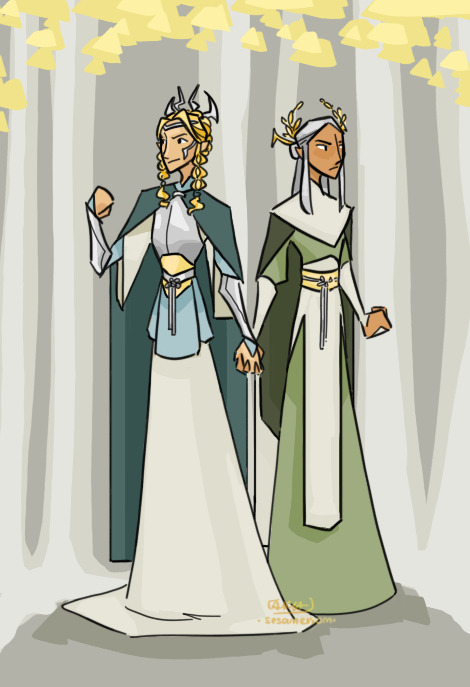
co-high kings galadriel & celeborn
since elrond doesn't want the kingship, galadriel & celeborn are the eldest in middle-earth of the lines of Olwe and Elmo respectively. olwe is older but hes the king of the teleri not specifically doriath sindar so there might be some dispute between which line the sindarin high kingship jumps to, but they very conveniently happen to already be married and so can skip all that and just be twice the headache for sauron
#silm#silmarillion#galadriel#celeborn#doriath#they picked yellow (like the mallorn leaves) as their accent color in place of melians pink#imagine if this was their backup plan if the aragorn distraction failed#oops the first long-lost heir claiming an ancient kingship wasnt enough to draw saurons attention away from mordor?#how about TWO not-so-long-lost heirs claiming one and a half ancient HIGH KINGSHIPS#now i wonder what would be the plan c after that#elrond agrees to claim the kingship for the good of middle earth and then promptly throws the crown away finrod-style the moment they win?#give arwen the noldorin high king/queenship and a really big dog?#let the twins share?#wait what would be the line of succession for the sindarin kingship if elrond doesnt want it#of the line of olwe galadriels the only one of the grandchildren left in middle earth#celebrian would be next or possibly gildor if hes actually finrods son#of the line of elmo celeborn and possibly thranduil (if oropher is celeborns brother) are still around#celebrian also goes next on this line and legolas on thranduil's side#and cirdan is floating around somewhere in the vague realm of 'kin of thingol'
286 notes
·
View notes
Text
Edrahil: (pulling lil’ Finardato’s hair out from out oh his hat)
Edrahil: Aww, little highness, you don’t hide things from the people who love you
~ several centuries later ~
Edrahil: (shoving Finrod’s too shiny hair back inside an old orc helmet as Sauron starts looking their way)
Edrahil: Hide. Your. Hair. Highness. You gotta hide your hair!
#being beautiful is a curse#my roman empire is members of the house of finwe#growing out of their insecurities about their non-noldorin traits#shiny elf boi#finrod#edrahil#lay of leithian#saurin#incorrect silmarillion quotes#silmarillion#tolkien
68 notes
·
View notes
Text

The Portrait of Lady Miriel Þerindé that hangs in the dining hall at Formenos
💔✨️🪡🧵
#miriel#miriel Þherinde#Fëanorians#house of finwe#art#lotr#fanart#tolkien#tolkien elves#silmarillion#silm art#lord of the rings#courtly noldorin portraiture#puffy skirt#embroidery#tapestry weaving#physical painting
298 notes
·
View notes
Text
Galadriel: There, perfect.
Elrond: I feel stupid.
Elrond: *Looks in the mirror* I look stupid.
Galadriel: You look fine.
Elrond: I look dead.
Galadriel: Fine, one necklace. ONE!
#Elrond bargaining to be allowed to dress up Noldorin while Galadriel tries to contain the inevitable damage#lotr#lord of the rings#silmarillion#incorrect lord of the rings quotes#incorrect silmarillion quotes#incorrect quotes#elrond#lotr elrond#elrond peredhel#galadriel#lotr galadriel
69 notes
·
View notes
Text
Post Miriel’s release:
Rando elf, impressed with Miriel’s argument in a court session: i’m surprised you did so well, considering you spent thousands if years in the halls.
Miriel: *pauses* Finwe and i raised the Noldorin kingdom from the ground up and you though i can’t argue in court?
Miriel: Bitch, i made the court!
#miriel is feral#give miriel a personality 2023#2024 technically#miriel an finwe created the noldorin kingdom#headcanonish obviosly#lord of the rings#lotr#lotr elves#silmarillion#incorrect tolkien quotes#silm incorrect quotes#incorrect lotr quotes#miriel#miriel therinde
44 notes
·
View notes
Text
Silm Epistolary Week, Entry #4: A diary entry (Friendship/Alliance)
An entry from Prince Findekáno's personal diary regarding Nelyafinwë (Y.T. 1312).
I am so excited for tomorrow and the next day! Tomorrow, Atto and I are going to see Uncle Náro and all of my cousins! Atto says he is very much not looking forward to visiting Uncle, but Haru, Uncle Arya, and Auntie Findis are all going so Atto feels as if he has to attend. I am mostly excited because I get to see my cousins and none of my other siblings will be in attendance. That means I will have cousin Nelyo all to myself.
Nelyo is my favorite cousin because he makes the best cookies and gives the best hugs and he likes me the best out of all of the others besides his brothers. He says my spirit is very bright. I think that means that I am awesome enough to spend time with the older kids. Atto says it means that I have a lot of energy.
Not even Turukáno gets to come with us tomorrow, but that's because there are no cousins who are his age so Atto thinks he will be bored. Irissë doesn't get to come with us because she's only two. I forgot how small babies were until I saw her after she was born. I think it's also because I am one of the older kids now so she seems smaller in comparison. I am a whole 31 years old! That means I am practically an adult. Cousin Nelyo is 58 which means he is even more of an adult than me. I am very upset that I have to be close in age with cousin Moryo because I want to be just like cousin Nelyo.
He is very pretty. He has long, red hair and it is a little bit curly so it has volume (??? I think that is the right word). It is so fluffy and cousin Nelyo lets me touch his hair even though Atto says you are only supposed to touch the hair of your parents, brothers and sisters, children, and people you are married to. (I would not mind marrying cousin Nelyo.) And he still has green eyes even though Auntie Nerdanel said that the color would likely fade as he grew. And he has freckles which I think make him even prettier.
Turukáno says our part of the family looks boring. He says black hair and blue eyes looks stupid. I have brown eyes from Ammë so maybe it is just Turukáno who looks stupid. Cousin Nelyo says I am cute and taps me on the nose whenever he sees me so he definitely thinks I am better looking than Turukáno.
Anyway, I am so excited to see cousin Nelyo! He said last time we visited that next time (otherwise known as tomorrow) he would start teaching me how to use a sword! Cousin Nelyo is the best at everything so I think he will be a great teacher. Turukáno says 'there is no value in learning to fight with a sword because you should fight with your words first and weapons as a last resort.' I think that sometimes you just need to get stabby.
Atto is calling so I have to go! I will write all about sword fighting lessons! and cousin Nelyo.
Notes From the Compiler: It is clear that Findekáno and Nelyafinwë were close from a young age. Additionally, the dynamic between Findekáno and Turukáno is amusing to read about. The hair customs of the Noldor are only ever alluded to in most primary sources. This seems to be a direct reference to an aspect of the culture which dictates who is allowed to touch your hair and what is seen as culturally unseemly. It is unclear here how Nelyafinwë perceives allowing Findekáno to touch his hair, but it is possible that Findekáno has always had a bit of a crush on his cousin.
#silmarillion#silm fic#silmarillion epistolary#maedhros#silm headcanons#fingon#silm#noldorin hair culture
20 notes
·
View notes
Photo




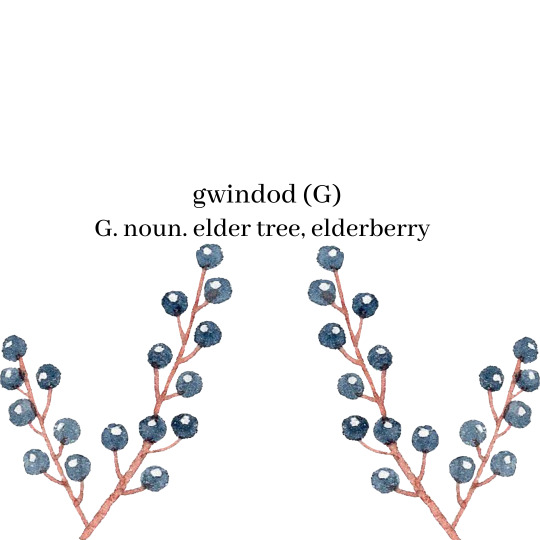




Another Gnomish word board! First one here!
Gnomish is the elven language Tolkien conceived of around the time of his writing of the Books of Lost Tales. It is a prototype of Noldorin languages and thus closer to Sindarin than later Noldorin Quenya
x x x x x x
79 notes
·
View notes
Text
Concept: there is a massive linguistic debate among the Noldor on whether to use past tense or present tense when referring to dead elves, since they're dead but are presumably in the Halls and may one day return. (The Vanyar and the Amanyar Teleri (Falmari) don't care but mostly use present tense. All the Moriquendi use past tense.) The Noldor used to use present tense, but then Miriel..well, she's not coming back, is she?
So they start using past tense for Miriel, and then for all the dead. Predictably, Feanor explodes, and the issue becomes very controversial, very political, and another wedge between Feanor and Fingolfin.
(Fast-forward: by lake Mithrim after Maedhros is captured, the sons of Feanor have a few screaming matches whenever one of them slips and refers to Finwe, Feanor, Amrod (if burnt version), or Maedhros in the past tense.)
After the Noldor settle in Beleriand, the ever-loyal sons of Feanor continue to use the present tense, but death and Doom weight heavily on the Noldor, and the addition of the Sindar population (who habitually use past tense) and the transfer to Sindarin as the main language push some Feanorians to use past tense. The linguistic distinction becomes a less explosive issue and less of a way to declare your loyalties.
After the Dagor Bragollach, the scales tilt more in the past tense's favor. After the Nirnaeth Arnoediad, everyone, including the sons of Feanor, use the past tense, and the despair is such that no one notices the change.
#optional: Some Noldorin Feanorians come to see using#the past tense as a rejection of reembodiment and therefore of Valinor#and use the past tense to affirm their Feanorian identity#this post is brought to you by me wondering whether elves use past or present tense for dead elves#and deciding to mine the idea for finwean family drama#the silmarillion#Noldor#house of finwe#Feanor#sons of feanor#fingolfin#legendarium linguistics#quenya#sindarin#softlysilver#tolkien's languages
565 notes
·
View notes
Text

Maeglin reading for @tolkiengenweek, day four - solo. Also for day two - animals!
Following on from my art last year of Maeglin wearing blue light glasses after the darkness of Nan Elmoth - I also just like the idea of him having a passion for reading and learning after his formative years being cut off from the world.
#tolkiengenweek#maeglin#lomion#the silmarillion#the silmarillion art#my art#forestials art#he is noldorin they are annoyingly nerdy
126 notes
·
View notes
Text
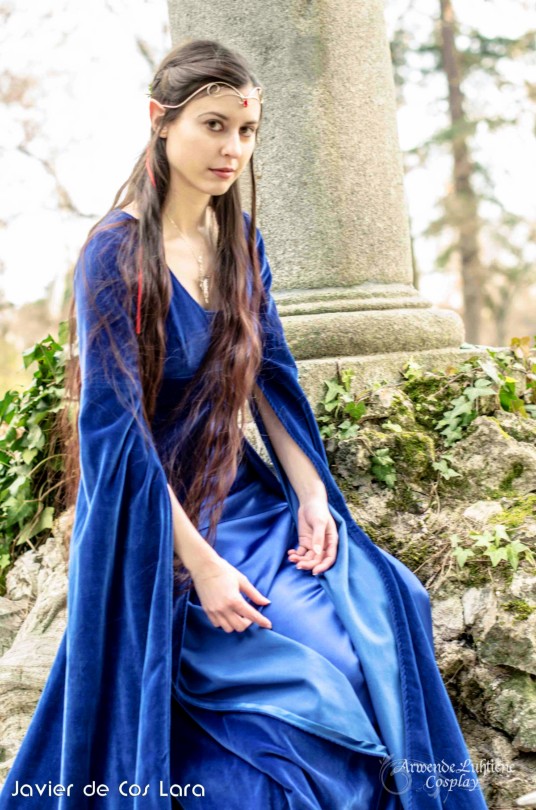


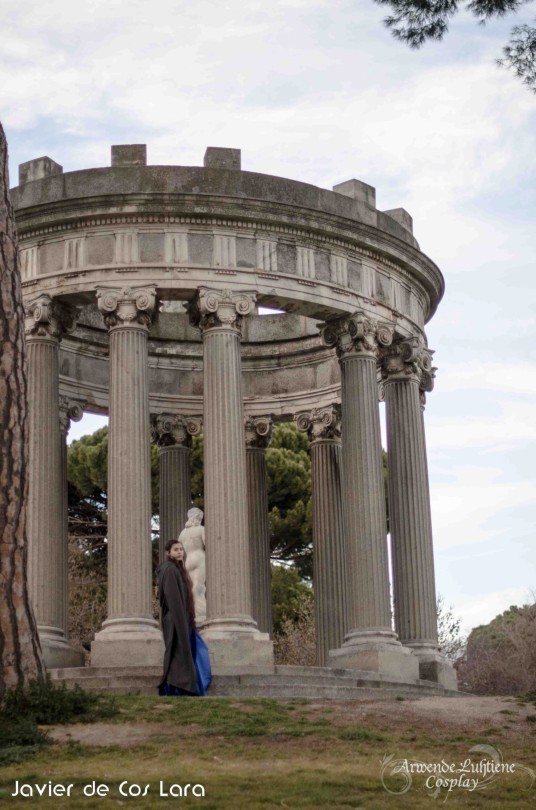

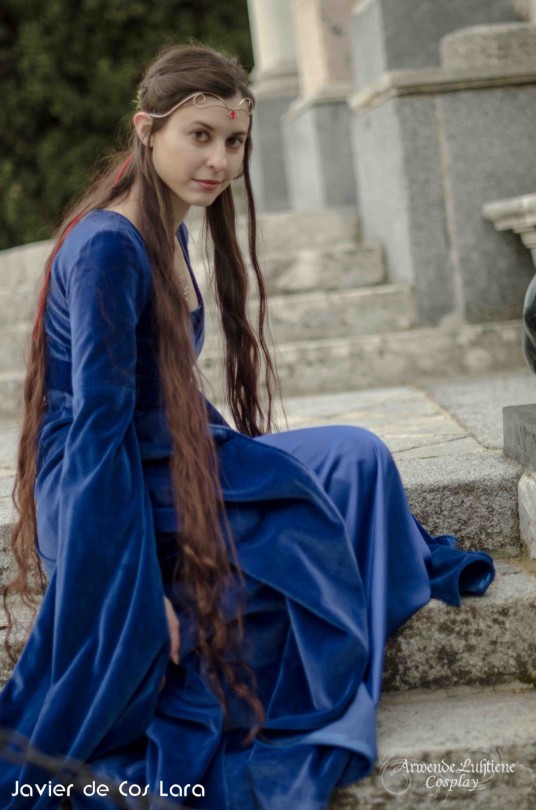
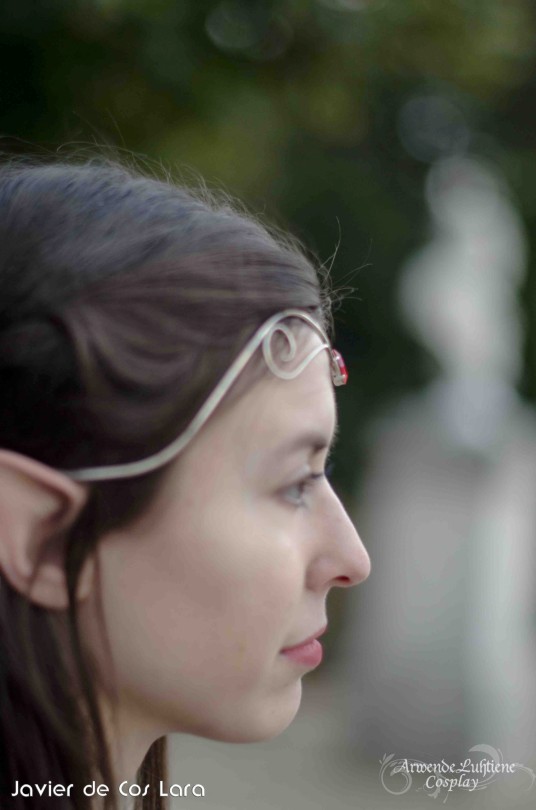

🍃Noldorin Elf OC (2015 shoot) 🍃
My Elven cosplay posts
DeviantArt
Facebook cosplay page
Cosplay Instagram
#elven cosplay#tolkien cosplay#lotr cosplay#tolkien#lotr#lord of the rings#lord of the rings cosplay#noldorin elf#noldorin elf cosplay#elf#elves#tolkien elf#tolkien elves#tolkien oc#My cosplays#rivendell#rivendell elf#rivendell elf cosplay#silmarillion cosplay#silmarillion#noldo#noldor#noldorin elves#imladris
25 notes
·
View notes